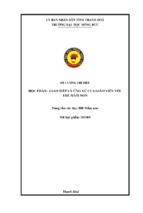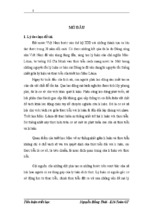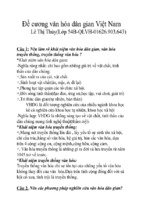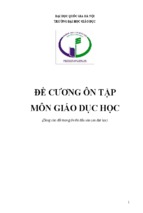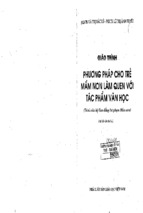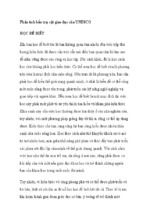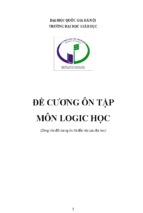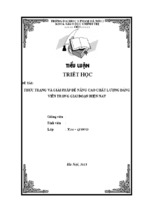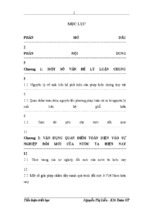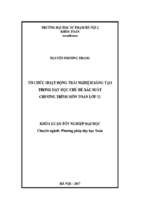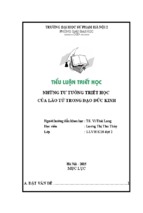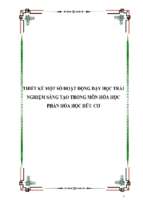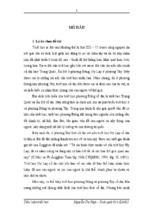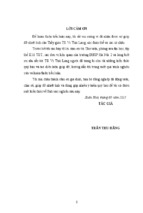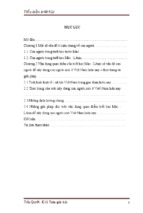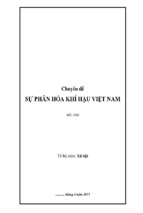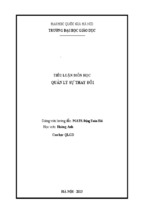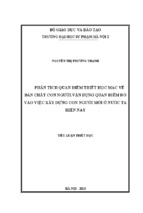THAI NGUYEN UNIVERSITY
SCHOOL OF FOREIGN LANGUAGES
DUONG THAO LINH
AN INVESTIGATION INTO THE EFFECTS
OF EXTERNAL FACTORS ON VOCABULARY
LEARNING OF GRADE 10 STUDENTS
AT PHU BINH HIGH SCHOOL
M.A THESIS
Field: English Linguistics
Code: 8220201
THAI NGUYEN - 2020
ĐẠI HỌC THÁI NGUYÊN
TRƯỜNG NGOẠI NGỮ
DƯƠNG THẢO LINH
NGHIÊN CỨU NHỮNG ẢNH HƯỞNG
CỦA CÁC YẾU TỐ BÊN NGOÀI ĐẾN VIỆC HỌC
TỪ VỰNG CỦA HỌC SINH KHỐI 10
Ở TRƯỜNG THPT PHÚ BÌNH
LUẬN VĂN THẠC SĨ
Ngành: Ngôn ngữ Anh
Mã số: 8220201
Người hướng dẫn: TS. Nguyễn Thị Diệu Hà
THÁI NGUYÊN - 2020
ABSTRACT
Undeniably, vocabulary learning plays an integral part in learning a
second language. There have been numerous studies that aim to find out the
roles of vocabulary learning, approaches to vocabulary and factors that affect
vocabulary teaching and learning. However, there is still lack of insight into
external factors that have influence on students’ learning of vocabulary in the
context of Phu Binh high school. Moreover, it is the fact that vocabulary
learning of grade 10 students at this school is not effective despite both
teachers’ and students’ efforts. Hence, this study was conducted to discover
what external factors have the most and the least impacts on grade 10
students’ vocabulary learning, and suggest some measures to improve the
effectiveness of vocabulary teaching and learning at this high school. This
thesis is a survey study. Questionnaire was used as the instrument to collect
data for this research. A Likert Scale questionnaire was developed on the
basis of items which refer to external factors affecting students’ vocabulary
learning; and SPSS program was used to analyze the data collected. The study
revealed that ‘Teachers” is the most influential factor, which is followed by
Peers, Number of exposures to the new words, Lexical items and English
curriculum. There is not enough evidence to prove that Access to native
speaker has strong impacts on students’ vocabulary learning. It is expected
that the findings of this study will not only benefit teachers and students at
this high school but also evoke further studies.
i
DECLARATION
I hereby certify that the thesis entitled “An investigation into the
effects of external factors on vocabulary learning of grade 10 students at
Phu Binh high school” is my own study in the fulfillment of the requirement
for the Degree of Master of Arts at Faculty of Post - Graduate Studies, School
of Foreign Languages, Thai Nguyen University.
Thai Nguyen, November, 2020
Approved by supervisor
Signature
Nguyen Thi Dieu Ha, Ph.D
Duong Thao Linh
ii
ACKNOWLEDGEMENTS
On completing this thesis, I would like to express my thanks to all
those who contributed their part to the work of this research.
First of all, I would like to express my deepest thanks to my respectable
supervisor, Nguyen Thi Dieu Ha, Ph. D, for her restless and sympathetic
encouragement, constructive advice as well as patient guidance from the
beginning up to the end of the study. Had it not been for her valuable and timely
feedback, I would have never been able to complete this research paper.
Besides, my sincere thanks also go to my dear colleagues and students
at Phu Binh high school for helping me collect data for this study and for all
their support and encouragement.
Finally, I would also like to give my special thanks to my family and
friends who have been interminably encouraging and facilitating me to
complete this thesis.
iii
TABLE OF CONTENTS
ABSTRACT ....................................................................................................... i
DECLARATION .............................................................................................. ii
ACKNOWLEDGEMENTS ............................................................................. iii
TABLE OF CONTENTS ................................................................................. iv
LIST OF TABLES ........................................................................................... vi
LIST OF FIGURES......................................................................................... vii
LIST OF ABBREVIATIONS ........................................................................ viii
CHAPTER I. INTRODUCTION................................................................... 1
1. Rationale for the study .................................................................................. 1
2. Research questions ........................................................................................ 2
3. Scope of the study ......................................................................................... 3
4. Methodology ................................................................................................. 3
5. Organization of the study .............................................................................. 4
CHAPTER 2. LITERATURE REVIEW ...................................................... 5
1. Definition of vocabulary ............................................................................... 5
2. Vocabulary learning ...................................................................................... 6
2.1. Importance of vocabulary learning ........................................................ 6
2.2. Factors affecting vocabulary acquisition ............................................... 7
2.3. External factors affecting vocabulary acquisition ................................. 8
3. Teaching vocabulary techniques ................................................................. 13
3.1. Using Pictures and Mimes ................................................................... 13
3.2. Using Description and Definition ........................................................ 13
3.3. Using Real Objects............................................................................... 13
3.4. Guessing from the Context .................................................................. 14
3.5. Giving examples................................................................................... 14
3.6. Using Translation ................................................................................. 14
4. Previous studies ........................................................................................... 15
iv
CHAPTER 3. METHODOLOGY ............................................................... 17
1. Context of the study .................................................................................... 17
2. Subjects of the study ................................................................................... 18
3. Method of the study .................................................................................... 18
4. Data collection instrument .......................................................................... 18
5. Data collection............................................................................................. 19
6. Data analytical method ................................................................................ 20
CHAPTER 4. FINDINGS AND DISCUSSIONS ....................................... 21
1. Data analysis ............................................................................................... 21
1.1. Questionnaires for students results ...................................................... 21
1.2. Questionnaires for teachers results ...................................................... 46
2. Discussion ................................................................................................... 48
2.1. Factors affecting students’ vocabulary learning .................................. 48
2.2. Measures to help students learn vocabulary better .............................. 50
CHAPTER 5. CONCLUSIONS ................................................................... 52
1. Conclusion ................................................................................................... 52
2. Pedagogical implications for teachers......................................................... 53
3. Limitations of the study .............................................................................. 54
4. Recommendations for further research ....................................................... 54
REFERENCES .............................................................................................. 56
APPENDICES .................................................................................................. I
APPENDIX 1:
QUESTIONNAIRE FOR STUDENTS (ENGLISH VERSION) .................. I
APPENDIX 2.
QUESTIONNAIRE FOR STUDENTS (VIETNAMESE VERSION) ..... VII
APPENDIX 3.
QUESTIONNAIRE FOR TEACHERS (ENGLISH VERSION)........... XVII
APPENDIX 4: DESCRIPTIVE STATISTICS ........................................ XIX
v
LIST OF TABLES
Table 1.
General information about the participants.................................. 21
Table 2.
Reliability Statistics - factor C ..................................................... 22
Table 3.
Item-Total Statistics - factor C ..................................................... 22
Table 4.
Reliability Statistics - factor C (2nd test)..................................... 22
Table 5.
Item-Total Statistics - factor C (2nd test) .................................... 23
Table 6.
Reliability Statistics - factor T ..................................................... 23
Table 7.
Item-Total Statistics - factor T ..................................................... 23
Table 8.
Reliability Statistics - factor T (2nd test) ..................................... 24
Table 9.
Item-Total Statistics - factor T (2nd test) ..................................... 24
Table 10. Reliability Statistics - factor E ..................................................... 25
Table 11. Item-Total Statistics - factor E ..................................................... 25
Table 12. Reliability Statistics - factor E (2nd test) ..................................... 25
Table 13. Item-Total Statistics - factor E (2nd test) ..................................... 26
Table 14. Reliability Statistics - factor P ..................................................... 26
Table 15. Item-Total Statistics - factor P ..................................................... 26
Table 16. Reliability Statistics - factor N ..................................................... 27
Table 17. Item-Total Statistics - factor N..................................................... 27
Table 18. Reliability Statistics - factor L ..................................................... 27
Table 19. Item-Total Statistics - factor L ..................................................... 28
Table 20. Reliability Statistics - factor L (2nd test) ..................................... 28
Table 21. Item-Total Statistics - factor L (2nd test) ..................................... 28
Table 22. Reliability Statistics - factor V ..................................................... 29
Table 23. Item-Total Statistics - factor V..................................................... 29
Table 24. KMO and Bartlett's Test (independent variables)........................ 30
Table 25. Total Variance Explained............................................................. 31
Table 26. Rotated Component Matrixa (independent variables) ................. 33
vi
Table 27. KMO and Bartlett's Test (dependent variables) ........................... 35
Table 28. Total Variance Explained (dependent variables) ......................... 35
Table 29. Component Matrixa (dependent variables) .................................. 36
Table 30. Correlations .................................................................................. 37
Table 31. ANOVAa ...................................................................................... 38
Table 32. Model Summaryb ......................................................................... 38
Table 33. Coefficientsa ................................................................................. 39
Table 34. Descriptive statistics - questionnaires for teachers results .......... 46
LIST OF FIGURES
Figure 1.
Descriptive statistics - factor T.................................................... 41
Figure 2.
Descriptive statistics - factor P ................................................... 43
Figure 3.
Descriptive statistics - factor E ................................................... 44
Figure 4.
Descriptive statistics - factor L.................................................... 45
Figure 5.
Descriptive statistics - factor C ................................................... 46
Figure 6.
Descriptive statistics .................................................................... 47
vii
LIST OF ABBREVIATIONS
EFA
Exploratory Factor Analysis
EFL
English as a Foreign Language
KMO Test
Kaiser - Meyer - Olkin Test
L2
Second Language
viii
CHAPTER I
INTRODUCTION
1. Rationale for the study
In recent societies, English, an international language, undeniably is a
very important language. It is considered as the link between countries all
over the world. In Vietnam, due to its vital role, English is one of the core
subjects in the national curriculum. Besides, mastering English helps learners
have better opportunities for higher education at prestigious colleges and
universities around the world as well as for well-paid working positions at
international companies. However, it is the fact that many young learners are
incapable of mastering this language although they have learned English since
they were little boys/ girls.
Obviously, in learning a foreign language in general and English in
particular, the role of vocabulary is irreplaceable. Building extensive
vocabulary can help learners have clear understandings when reading and
listening as well as help them express their ideas and thoughts fluently and
cogently when speaking and writing. According to McCarthy (1990), “No
matter how well the student learns grammar, no matter how successfully the
sounds of L2 are mastered, without words to express a wide range of
meanings, communication in an L2 just cannot happen in any meaningful
way”. Moreover, it is stated by Folse (2008) that the vocabulary level is a key
factor that helps learners to enhance their second language proficiency.
Conclusively, vocabulary is the element that links four main skills namely
speaking, listening, reading, and writing altogether. By enriching vocabulary
students will find it easy to master English in both the way they comprehend
and the way they produce the language.
1
Actually, in Vietnam education, much effort has been made in teaching
and learning English inside and outside schools. In each 45 - minute lesson, 5
to 7 minutes are often spent to deliver the new words or phrases, and 3 to 5
minutes for small activities to check students’ understanding of the new
words. The time may be shorter or longer, depending on the familiarity of the
topic to students. In the researcher’s workplace, each teacher has her
techniques of teaching vocabulary and checking students’ understanding of
new words that are appropriate with each class setting and students’ level.
However, a huge number of students still cannot acquire the words and use
them correctly; consequently, their results in the tests and examinations are
not good even though they meet the questions relating to the words or phrases
they have learned. In short, although both teachers and students have made
great efforts, students’ learning of vocabulary is not as effective as expected.
For all of the above - mentioned reasons, to identify the problems in
learning vocabulary faced by 10th form students at Phu Binh high school, where
the researcher is working, is necessary. Then, the external factors that have the
most impact on their learning of the new words or phrases can be found out. This
will make it possible to suggest some measures for the teachers and learners to
boost up the learning and teaching vocabulary at that high school.
2. Research questions
This study aims to find out external factors that have the most and the
least effect on the vocabulary learning of 10th grade students at Phu Binh high
school in Thai Nguyen. Therefore, the specific research questions addressed
in this study are as follows:
1. What external factors have the most and the least effect on the
vocabulary learning of 10 th form students at Phu Binh high school, Thai
Nguyen province?
2. What can be done to help students learn vocabulary better?
2
3. Scope of the study
Due to the fact that it is impossible to cover all the aspects of needs
analysis and course objectives. The study mainly focuses on investigating
some external factors that have huge influences on vocabulary learning of 10th
- grade students at Phu Binh high school in Thai Nguyen province where the
researcher is working.
In the context of teaching and learning English at high school, English
vocabulary mentioned here means the new words in the English textbook
“Tieng Anh 10” - the old version. The target population is students at grade
10 who have been learning English for 4 to 7 years.
Besides, the study also investigates English teachers working at Phu
Binh high school to find out techniques which are often used to motivate
students to learn vocabulary.
Practically, the findings of the study would be much useful to both
teachers who are thinking of the ways to teach vocabulary effectively and
students who want to overcome the challenges and boredom in learning
vocabulary.
4. Methodology
4.1. Subjects of the study
200 10th form students randomly selected from 13 classes and 13
English teachers at Phu Binh high school participated in this study.
4.2. Method of the study
The study is conducted to find the factors that have the most and the
least impact on vocabulary learning of the 10th-grade students. Therefore, a
quantitative approach which focuses mainly on understanding, explaining,
exploring, discovering, and clarifying situations, feelings, perceptions, attitudes,
values, beliefs, and experiences of a group of people is used.
3
4.3. Data collection instrument
Questionnaires for both teachers and students will be employed to
collect data.
4.4. Data analytical method
The purpose of the survey is to find out the factors that have the most
and least effects on 10 th form students’ learning of vocabulary. The data was
analyzed by using frequency, percentages, and means. For the statistical
analyses of the data obtained, the Statistical Package for Social Sciences
(SPSS) was used.
5. Organization of the study
The thesis consists of five main chapters as follows:
CHAPTER 1. INTRODUCTION
In this part, general information including the rationale, the aims, the research
questions, the scope, the method, and the organization of the study is presented.
CHAPTER 2. LITERATURE REVIEW
This part provides a summary of some theories relating to vocabulary in the
second language teaching and learning, and factors affecting vocabulary acquisition.
CHAPTER 3. METHODOLOGY
This part describes the context of the study, the subject as well as the
method of the study. Besides, the methods used to collect and analyze the data
are also presented
CHAPTER 4. FINDINGS AND DISCUSSION
In this chapter, the detailed results of the study as well as the discussion
about the results will be presented.
CHAPTER 5: CONCLUSION
This chapter provides a summary of major findings, proposes some
recommendations, states the limitations of the study, and offers some
suggestions for future research.
4
CHAPTER 2
LITERATURE REVIEW
This chapter provides a brief review of the theoretical knowledge
relevant to the study including an overview of vocabulary; the importance of
vocabulary in language learning; factors affecting vocabulary acquisition;
external factors that affect students’ vocabulary learning and teaching
vocabulary techniques.
1. Definition of vocabulary
Michael Lewis (1993:89, cited in Hoang, 1995) states that vocabulary
“…may be individual words or full sentences - institutionalized utterances that conveyed fix social or pragmatic meaning within a given community”
According to Hornby (1995), vocabulary could be a list of words with
their meaning. it was defined by Penny Ur (1996:60) that “the words we teach
in the foreign language. However, a new item of vocabulary may be more
than a single word; a compound of two or three words or multi-word idioms”
Zimmerman cited in Coady and Huckin (1997) defines vocabulary as
central to language teaching and of critical importance to a language learner.
Vocabulary is defined by Neuman and Dwyer (2009) as words learners are
obliged to know to have effective communication.
Moreover, in his study, Benettayeb (2010) states that vocabulary is the
most amounts of words illustrating a given language. Without vocabulary, the
learner would be incapable of using and discerning the target language.
Lessard - Clouston (2013) assumes that vocabulary is implied as the
words of a language, including single items and phrases or chunks of several
words that express a particular meaning. In other words, vocabulary not only
consists of single words with particular meaning but it also comprises words
phrases, or chunks.
5
2. Vocabulary learning
2.1. Importance of vocabulary learning
In the very first part of his book, Michael Mc Carthy (1990:2) stated that:
It is the experience of most language teachers that the single, biggest
component of any language course is vocabulary. No matter how well
students learn grammar, no matter how successfully the sounds of L2 are
mastered, without words to express a wide range of meanings, communication
in an L2 just cannot happen in any meaningful way.
The learning of vocabulary is taken into account as an essential part in
learning a distant language. Therefore, as one of the knowledge aspects in
language, vocabulary plays an integral role for learners in language acquisition
(Cameron, 2001). According to Schmitt (2000: 55) “lexical knowledge is central
to communicative competence and to the acquisition of a second language”.
Furthermore, Laufer and Nation (1999), Maximo (2000) and Read (2000)
approving of the idea that vocabulary acquisition is one of the most important
factors contributing to success in using a second language. Undoubtedly, having
an extensive vocabulary enable students to use the structures and language
functions they have been taught before to communicate comprehensibly.
According to Nation (2001), vocabulary knowledge and language use
have a corresponding relationship. To be more detailed, the more vocabulary is
acquired, the more appropriately and correctly language is used and, on the other
hand, language use leads to an improvement in knowledge of vocabulary.
Many other researchers such as Richards (1980) and Krashen (1989)
cited in Maximo (2000) state some reasons for which vocabulary needs to be
devoted special attention to when students learn a second language. Firstly, to
master a language, it is necessary to enlarge vocabulary. Secondly, it is
reported that the lack of vocabulary is the main reason why language learners
carry dictionaries with them instead of grammar books.
6
In short, the important role of vocabulary in language learning is highly
appreciated, especially in second language learning. Thus, teaching vocabulary
should be a part of the syllabus and vocabulary should be paid more attention
through well-planned lessons of language teachers and serious learning
behavior of learners.
2.2. Factors affecting vocabulary acquisition
Despite several pieces of research on vocabulary acquisition that has been
carried out by linguists, psychologists, and theorists of L2 acquisition, there is
still no general theory of vocabulary acquisition. Psychologists are in favor of
vocabulary development and exploration of the formal models of vocabulary
acquisition and ignore the L2 vocabulary literature because it is model free.
Meanwhile, applied linguists pay more attention to the descriptive aspects of
bilingual lexicon even when this implies an immediate pedagogical significance
(Singleton, 2008). It was these differences that have made it extremely
challenging to list all the influential factors and how they affect.
Singleton (2008:4-24) listed some significant factors that have impacts
on vocabulary learning and acquisition namely linguistic features of lexical
items, the influence of first and other languages, the incremental nature of
vocabulary acquisition, the role of memory in vocabulary learning, the
organization and development of L2 mental lexicon, the source of vocabulary
(exposure to linguistic input), individual learner differences, the role of
teacher and vocabulary teaching and strategies.
Quach (2007) classified all the factors into three main groups, including
learner - related factors, teacher-related factors, and learning context. In term of
learner - related factors, she mentioned memory and storage system, learner’s
needs and interests and learning styles and strategies. Teacher - related factors
consisted of teaching method and strategy training. Language input and output
were two other factors mentioned in the group of learning context.
7
Maraco (2010) and Lightbow & Spada (2013) categorized factors
affecting vocabulary acquisition into two main groups namely internal factors
and external factors. Internal factors include age, language aptitude, intelligence,
attitude and motivation, personality. External factors are the factors outside the
learners and have effects on their learning. External factors refer to particular
language learning conditions including foreign language curriculum, the
teachers, learning task, the partners, the classroom atmosphere, motivation, the
support of family, and the availability of input and output opportunities.
2.3. External factors affecting vocabulary acquisition
Foreign language curriculum
In terms of curriculum, according to Nation and Macalister (2010), the
act of analyzing, sequencing the course materials, evaluation, format, and
presentation of materials is indispensable. Undeniably, materials are focused
entirely on foreign language learning in general, and second language vocabulary
learning in particular.
Various types of task materials with dissimilar levels of difficulties will
create different impacts on the students’ vocabulary acquisition of a foreign
language. For instance, learners learn a new word in a given list is not in the
same way as when learning the same word appearing in a passage. Probably,
remembering the meaning of a word does not mean the learner can use that word
in real-life situations. Consequently, the purpose of vocabulary learning should
include both remembering words and the ability to use them automatically in a
wide range of language contexts when the need arises (McCarthy, 1984).
Learning task
Williams and Burden (1997) indicate that the learning task includes the
materials being learned as well as the goal the learner is trying to achieve by
using these materials. As stated by Crookes (1986), a task is a piece of work
or an activity, usually with a specified objective, undertaken as part of an
educational course, or at work.
8
In fact, it appears to refer to the idea of some kinds of activity designed
to engage the learner in using the language communicatively or reflectively in
order to arrive at an outcome other than that of learning a specified feature of
the L2. A task can be a real-world activity or a contrived, pedagogic activity
(Nunan, 1989), as long as the process of completing the task corresponds to
that found in discourse based on the exchange of information (Ellis, 1994).
Additionally, it is stated by Fluente (2006) that the best learning
condition of a foreign language can be facilitated by specific language-learning
activities called tasks. Tasks should be structured in reference to desirable
goals. The goal of L2 vocabulary tasks should be the acquisition of words and
expansion of word knowledge, not only the meanings but also the forms. In her
research on the role of pedagogical tasks and form-focused instruction, Fluente
(2006) concludes that the Presentation, Practice and Production lessons are not
as effective as task-based lessons. The analysis also suggests that a task-based
lesson with an explicit focus-on-forms component is more effective than a taskbased lesson that does not incorporate this component in promoting the
acquisition of word morphological aspects. The results also indicate that the
explicit focus on the forms component may be more effective when placed at
the end of the lesson when meaning has been acquired.
Different types of task materials, task purposes, and tasks at various
difficulty levels have various effects on the learners’ vocabulary acquisition.
For example, learning words in a word list is different from learning the same
words in a passage. As well, remembering a word’s meaning is different from
learning to use the same word in real-life situations.
Number of exposures to the new words
The number of exposures and recycling is also important in acquiring
vocabulary. Nation (2001) states that five to more than 20 repeated meetings are
needed to learn words according to the various criteria in the different studies.
9
Peers
Lantolf and Thorne (2004) claims that “peers” is a factor that affects
the developmental process of learning occurring through participation in
cultural, linguistic, and previously formed settings such as family life and
peer group interaction. Besides, Shah (1999:107) also suggests that “aspects
such as an inappropriateness in the use of second language, show of dislike,
boastfulness, showing off, and formality second language use are several
other factors”. These factors, according to her, lead to either the lack of oral
communication or practice of the second language among students. Seng
(2006) also draws a conclusion from her research that it will be better for
language learners if their peers share their inspirations and information; and if
a classmate explains something to them.
Teachers
Teacher’s personalities may have a great influence on students’
performance and their final results. In addition, the teacher’s performance in
the classroom, teaching style, and methodology is part of the process
variables (Dunkin & Biddle, 1974). The teacher’s age may also be another
important factor. It has a strong relation with teaching experience, which
helps explain the teacher’s (1) efficiency in the language learning class; (2)
activity, energy, and movement in the classroom; (3) openness to innovations
and new methodological approaches; (4) enthusiasm and degree of
hopefulness, which may decrease with age; (5) willingness to strive and
improve teaching and learning conditions, etc. The teacher’s social class,
ideology, and beliefs derived from his/ her background may affect his/ her
behavior and performance in class, which influence learners’ acquisition. For
instance, some progressive teachers identify themselves with certain practices
10
- Xem thêm -


